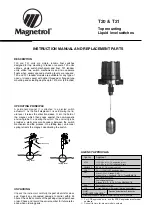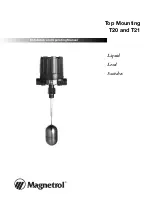
Neighbor Discovering
In PIM domain, routers periodically sends PIM Hello packets to all the PIM routers with the
multicast address 224.0.0.13 to discover PIM neighbors, maintain the PIM neighboring
relationships between the routers, thus to build and maintain the SPT.
SPT Building
The SPT building process is also the “flood-and-prune” process:
(1)
When the multicast source S is sending multicast packets to multicast group G in PIM DM
domain, the multicast packets will firstly be flooded: After the multicast packet passes the
router’s RPF check, the router will create a corresponding (S, G) entry and forward this
packet to all the nodes downstream in the network. All the routers in the PIM DM domain
will create the (S, G) entry after this flooding process.
(2)
Then branches without receivers downstream are pruned. The downstream branches with
no receivers will send prune message to the upstream node to delete the corresponding
interface in the output interface list of the multicast forwarding entry (S, G), and the
multicast packets will no longer forwarded to the pruned branches.
Note
:
The entry (S, G) contains the multicast source address S, the multicast group G, the list of
output interfaces and input interfaces.
The prune process is initiated by the leaf router, as shown in Figure 11-11, the leaf router
without receivers (such as the router directly connected to Host A) performs the prune actively,
and the prune process will last until there are only necessary branches in the PIM DM domain.
These branches form the SPT.
Figure 11-11 SPT Topology in PIM DM
The “flood-and-prune” process takes place periodically. The pruned nodes are provided with
timeout mechanism, and the “flood-and-prune” process will resume after the pruned state
times out.
269
















































